The Ministry of Defence’s latest written answer provides a clearer sense of direction for Shipborne Rolling Vertical Landing, even if some uncertainty over timing remains.
In response to concerns raised after the MoD’s annual report referred to a ‘Rolling Vertical Landing’ upgrade cancellation, the Minister of State noted that “Shipborne Rolling Vertical Landing (SRVL) for the UK’s F35B Lightning aircraft to Queen Elizabeth Class carriers has not been cancelled; it has been reprofiled as a Defence Choice so that fitting the capability aligns with the introduction of a related complex weapons programme.”
A second line in the same answer added that this shift is “not expected to have an adverse impact on overall Carrier Strike or F35B capability.”
Taken together, the explanation more likely suggests a realignment due to budget concerns rather than a withdrawal. The carriers’ current configuration backs up that reading. HMS Prince of Wales retains several features installed for the early SRVL trials. HMS Queen Elizabeth, however, has not received the Bedford Array landing aid during her ongoing refit, even though that had once been expected for this maintenance period. That omission reflects a deliberate decision to pause near term integration while leaving the option in place for a later phase.
SRVL’s advantage becomes more relevant when planning for heavier and more complex long range stores. These were part of the original concept of operations, but their development and introduction have moved to the right. If SRVL is now intended to line up with the arrival of a future, heavier and expensive weapon, the sequencing is consistent with the operational logic. But only if.
What is SRVL?
Shipborne Rolling Vertical Landing, or SRVL, is a carrier landing method that lets jets touch down with greater weight by combining forward motion with vertical thrust. Instead of slowing to a hover, the aircraft keeps some speed on approach so its wings generate lift while the engine provides controlled thrust. This combination allows pilots to land safely without discarding fuel or weapons before reaching the deck.
The process occurs on an aircraft carrier at sea and blends elements of both vertical and conventional landings. The jet rolls onto the deck with forward momentum, uses wing lift to stay stable, and relies on vertical thrust to settle precisely. The technique is especially valuable for aircraft like the F-35B because it supports returning to the ship at higher all-up weights.


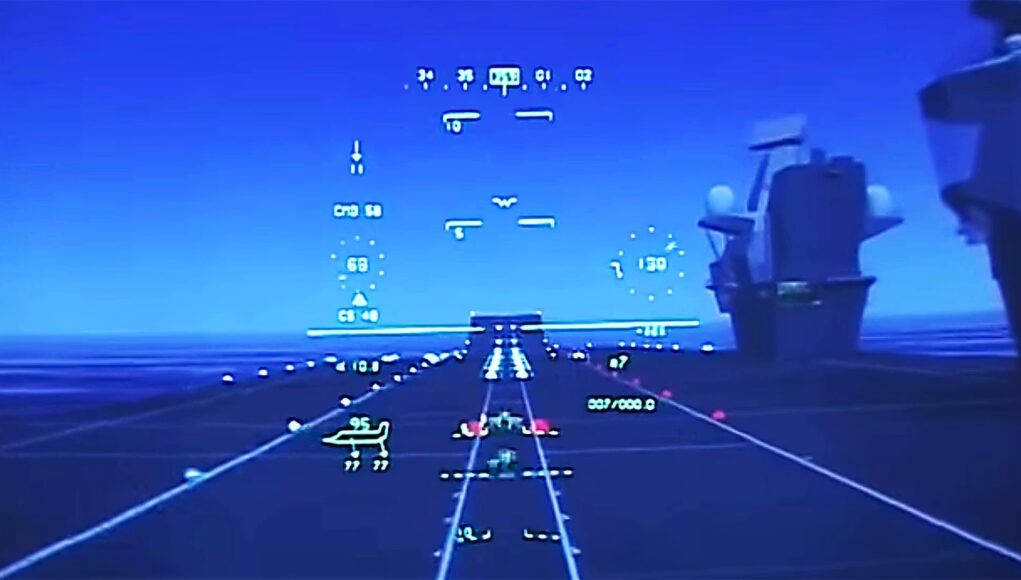


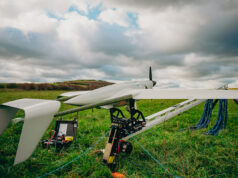
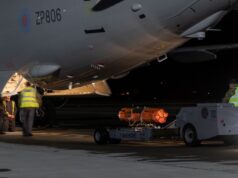


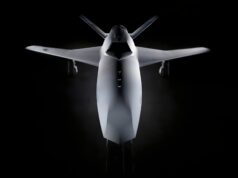


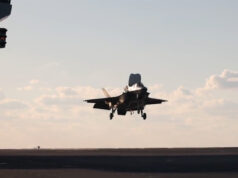

Other news… USN Constellation class frigates cancelled.
Bit late but yes, interesting.
Sad. They need to accept that other countries’ build standards are good enough for their second tier.
100%
CNN Report the words of an analyst and former USN captain:
_”The Constellation was a great waste of money” and would not meet the Navy’s mission requirements for even lower-level threats, let alone a modern navy like China’s…
…It would not survive long in an action against a Houthi-level threat”_
The USN wants everything to be a cruiser and with the latest A-Bs they’ve made it in all but name. It’s a great Jack of All Trades. However, there’s also room for a smaller, cheaper and quieter ship, focused more on ASW. ASW — only three letters but so hard for a USN captain to spell. They seem to be out of practice since the original ASW destroyer Spruance (which they eventually mutated into the Ticonderoga cruiser).
It’s true a FREMM wouldn’t last as long as a destroyer against the Houthis. I think the Alsace lasted about 70 days until it ran out of ammo, whereas an Arleigh Burke could undertake a 6 month deployment there or even more. Not everything is about the Houthis. Notwithstanding the destroyer costing well over three times as much to build, a modern frigate would perform substantially better than a noisy destroyer when conducting ASW. It’s just they just couldn’t resist turning this frigate into a cruiser.
Ironically, the FREMM?? Class was selected as an affordable ‘off the shelf solution’.
Then the US Navy ‘tweaked’ the design, with a few minor adjustments, lengthening, altering the superstrutucture, the layout, the propulsion etc, etc.
Costs went out of control, now the affordable fleet frigate has become 1.4 $bn per copy!
Net result, 10 Constellation class frigates have become 6, with the final 4 cancelled….
A nightmare…
Or more accurately, CNN quotes former Aleigh-Burke destroyer captain on why he thinks a frigate isn’t as good as a destroyer…
Several frigates, including ye olde HMS Richmond, ‘survived the Houthis’ without any problems.
They must be pressed hard on Type 26
Wouldn’t the Hunter class derivative of the type 26 version be closer?
I think the Canadian River Class destroyer is a better and simpler fit for the USN. The Canadian vessel is fitted with a very large number of USN kit, combat systems (Aegis), the Standard missiles, ESSMs, RIM116, decoys and others.
Only real difference from the Constellation that the USN designed is to be found in
1. the number of MK41 VLS (42 vs 24 on the River, easily resolved) and
2. use of the MT30 instead of the LM2500 gas turbine (keeping the MT30 won’t be a problem for the USN as they already use that engine in their LCS vessels).
3. River class is using the SPY7 radar while the USN has opted for the SPY6 (former from Lockheed latter from Raytheon), and I believe these systems are readily swapped out with a slight modification to the River class mast.
4. ASW suit would require swapping out the Ultra Electronics sonars on the River for the Thales CAPTAS-4 on the Constellation class (USN choice).
5 Main gun – River Class has the 127mm (Leonardo OTO) while the constellation was to be fitted with a BAE 57mm (USN could easily swap out the gun to the 57mm or retain the caliber and put in the BAE 127mm that is standard on the Burkes).
Agreed, River Class would be the logical choice as the replacement of the Consternation/Cancellation Class. Current administration may have to offer an olive branch re trade to the Brits and Canadians in order to facilitate transaction. Wonder how large a piece of the development/production pie BAES & RR will be offered for cooperation? Competency may indeed will out, ultimately.
I can tell you right now, any interest from the USN for a T26 or River-class will be leapt on faster than you can blink, no olive branch needed. BAE and Rolls Royce already have significant industrial interests in the US, and the appeal of exports and a standardised Western frigate to bring costs down would have both the UK and Canadian governments salivating.
Last thing we need is another over price English speaking navy with a corrupt procurement system bitching and moaning about T26.
We already have Canada and Australia for that with zero benefit to the UK due to their bespoke designs.
We should only look at Norway style deals where we are actually building the ships.
Hence, the requirement for the trade olive branch! 😁
What bitching and moaning are the Canadians and Australians doing about T26, exactly?
As for “no benefit to the UK”, pull the other one. The design licensing, component manufacturing, and ongoing support all provide both real money to the UK economy, and savings for the RN in through-life support. UKDJ previously calculated the RCN and RAN orders were worth £6bn to us.
BAES and RR are excellent MIC poker players, no tells and wager judiciously.
You know the first thing the USN would want to do with the river class is add an ABM capability, 10 meters to the length, and two to the beam to handle all the extra gold plate armour.
Lockheed Martin share price would go to the moon (unlike its government contracted lunar vehicles)
😂
FREMM was a cheap warship, the Rivers are already very expensive.
First moron who suggests f**king w/the approved spec. will receive 40 lashes from the cat o ‘nine tails before the mast, the second and subsequent morons will be hung from the yardarm. Probably induce a very salutary effect. 😁
You use alot of “easily” when most modifications of ships to date have been the opposite.
In this case, very little of what is listed is a modification. Two significant changes (gun and sonar) are just a reversion back to systems that the baseline T26 already carries.
The radar is arguably the biggest risk, but both SPY 6 and SPY 7 were designed to refit Burkes and Ticos; the space and weight requirements are likely to align far closer than systems like ARTISAN and CEAFAR.
I thought the hunter class had Aegis
From what the Secretary of the Navy said, I got the impression they are going to go down the unmanned surface vehicle route. They want something quick to build, in large numbers. Not sure if any current frigate design would fit that requirement.
The cancellation class
Lol
Okay, I’ll say it first. Fitted for but not with SRVL capability…Seems a familiar road.
It’s possible that it’s not needed for the limited weapon choice that is currently available and that as the integration of the more advanced weapons has been delayed, so has the capability for utilising them. This would align with the statement.
I’m giving the MOD as much string as possible here, as I suspect the truth is affordability reasons.
Whether or not It’s still a thing, the Pilots will still need to practice at some point. It’s been proven possible and entirely doable now so It’s another capability in the bag.
True but they will also need to practice with the new weapons, so I guess the thinking could be to combine the 2. Being generous here.
SRVL hasn’t ben proven.
The last series of trials were cancelled when PoW developed a defect and didn’t get to the East Coast of the US for the trials.
So they’re still outstanding….and were necessary to start extending the envelope. Only 2 pilots have undertaken SRVL to date, both are test pilots. Neither are with the RN, 1 was but believe he has gone Civvy now.
And that’s before we actually make it an operational technique and train other pilots on it…
And without heavier weapons there still just isn’t the need for it…now…or until 2035 at the earliest…right now the max UK weapons loadout on F-35 is c5,000lbs (2 Asraam, 2 Amraam, 2 internal Paveway IV and 4 external Paveway IV). Even in 2035 the max planned load out will only be c6,500lbs (2 Asraam, 2 Meteor, 8 internal Spear, 4 external Paveway 4) and neither of those loadouts is a likely one to be carried…
Until FCASW gets integrated, the RN/RAF buys 1,000lb JDAM or external tanks are integrated and operational we just don’t need SRVL…
Hopefully it won’t die a death in the interim like HRAS…
Well that sure sounds like “Proven and Doable” to me.
Trials were undertaken covering different scenarios, but were nowhere near complete.
Cool Info, thanks.
Fcasw isnt being intergrated.
It’s not planned at present. Storm Shadow was supposed to be but was pulled from integration back c2010.
However, MBDA recently stated that fit checks had been undertaken. Now these will be very basic, probably paper based. But it does show there is some interest in eventually adding it.
Not yet, but the fit trials and the explanation for this decision hint that it is being considered for the DIP.
Would make a lot of sense tbh, it wouldn’t arrive much later than Meteor.
Yes, this is the explanation I read on X and it seems reasonable to wait for FCASW. The B’s bring back capability is not as poor as some believe apparently.
The differences in A/B/C loadout performance etc are, as you say, more marginal than people wish to make out.
TBH if you are carrying expensive missiles and a few cheap glide bombs – the glide bombs get ditched if needs be.
The thing is in a few marginal cases of loadout profiles SVRL could be very useful when it is hot.
So many projects are reporting delays. You would not think that a war rages in Europe. However, the Treasury can’t wait for a Ukrainian peace deal, so it can take a knife to the MOD’s budget. Sadly, a peace deal will likely see an increase in Russian activity endangering UK undersea infrastructure and a possible build-up of drone incursions. One thing is for sure: a massive Russian rebuild of its defences will possibly be far greater than we think. The brutal truth will result in a considerable increase in the UK forces budget, or we will be faced with a potential enemy that could dwarf anything Europe can field.
It is a difficult situation to spend increased money on defence for a war that may or may not come. The Russian’s have the advantage of knowing when their defence spending needs to peak because they’ll be the ones starting hostilities, presumably. People in Russia probably have the same concerns as us: Ivan would rather that his babushka gets her hip replacement, for example. On the other hand, nobody likes being thrown out of windows or sent to work camps so the authoritarian state have more tolerance for defence spending.
On the plus side, Europe has more people and is considerably more affluent than Russia so we don’t need to spend as much per head on defence to be secure. What is required though is better coordination and burden sharing within Europe. If everyone is spending a reasonable percentage of GDP on defence then others don’t have to spend 6% because some are spending much less than the recommended target.
The really interesting question is the identity of this ‘related complex weapon programme’.
Pollard seemed very noncommittal on FC/ASW, but maybe he was saving it for the DIP?
I understand that SRVL involves some risk with an unrestrained aircraft rolling up the deck at modest speed. When requiring to take onboard a still-partly loaded aircraft, why can’t the carrier just head into the wind and increase speed, just like they did in the old days? Then the relative speed of carrier and aircraft attempting a SRVL landing would be about zero, and the risk eliminated. (My father was the first CO of 829 Squadron in Jan 1943).
I’ know its probably down to having no money to do the upgrade and more urgent funding requirements etc.
But with the imminent scraping of Argus which provided crucial helicopter training I just wonder once Queen Elizabeth returns if she will assume a more amphibious role for the RMs with both Albions and Argus gone to get the most use of what we have left! Just a thought maybe.
I have long thought the original RN plan to enhance amphibious capability of the QEs made sense. I think the estimated cost was @£70m.
The ships would be too close to shore to ensure theyre sufficiently protected.
HMS POW was built slightly differently than QE with a nod to accomodate some Amphibious Forces if needed ( allegedly ).
Yes your right just working with a bay class heavy lift helicopter could be flown onto them from the carriers out of range to transport the RMs to shore possibly.
Getting the most use of what we have until MRSS arrive.
Yes I think that rings a bell too.
A QE with a bay class would form a powerful amphibious
Force and until the new frigates arrive in numbers
we appear be mainly concentrating our main fleet
in the Atlantic for the next 5 years at least!
If both carriers can be crewed it makes sense until the MRSS arrive.